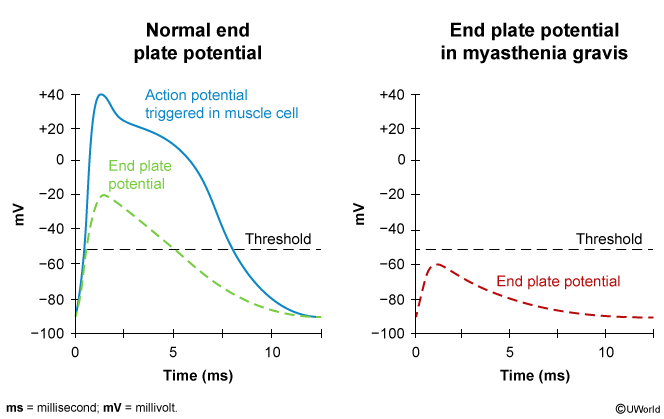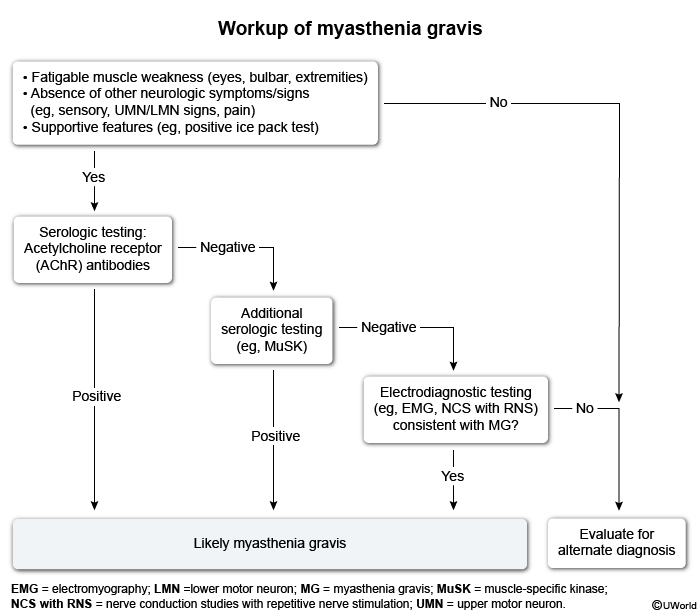Myasthenia Gravis
Article Sections
Introduction
Myasthenia gravis (MG) is an autoimmune disorder of the neuromuscular junction characterized by fluctuating muscle weakness and fatigability.
Pathophysiology
MG is caused by an autoantibody-mediated, T cell–dependent attack on the postsynaptic nicotinic acetylcholine receptors (AChRs) of the neuromuscular junction (Figure 1). Blockade of the active site of AChRs prevents acetylcholine from binding and also triggers endocytosis of AChRs (receptor internalization), as well as complement-mediated membrane damage. Over time, these changes result in reduced numbers of AChRs. The decrease in available cation channels reduces the end plate potential following acetylcholine release (Figure 2). Because the threshold potential is not reached, the muscle cells do not depolarize as frequently, leading to defective neuromuscular transmission.
The thymus is involved in the differentiation of T cells and seems to be the site of autoimmunization in MG, perhaps by reacting to muscle-like cells in the thymus that express AChR antibodies. This may be why most patients with MG are found to have some form of thymic disease (thymic hyperplasia, thymoma).
Continue Learning with UWorld
Get the full Myasthenia Gravis article plus rich visuals, real-world cases, and in-depth insights from medical experts, all available through the UWorld Medical Library.
Figures


